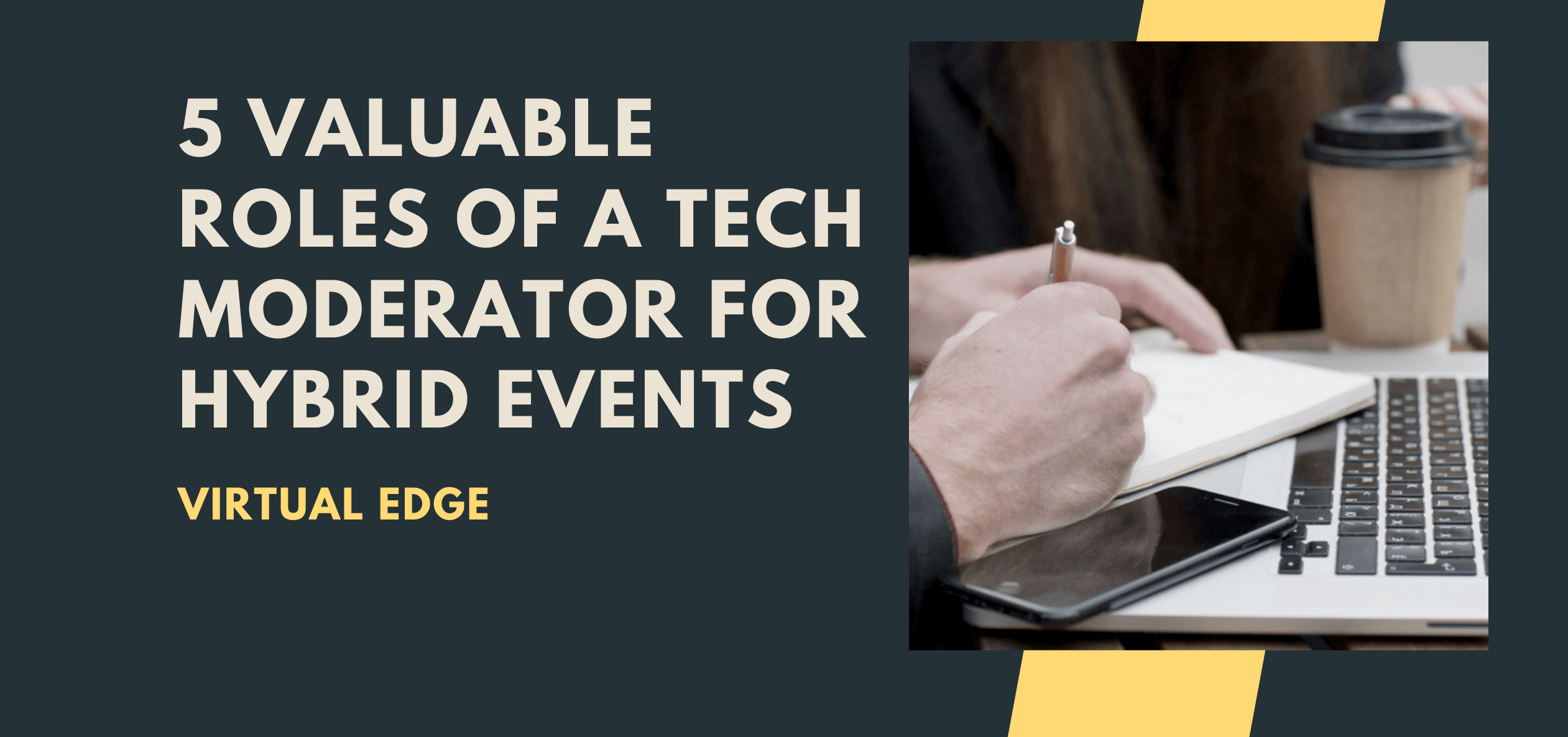A hybrid event is a meeting containing both “F2F” and “virtual” audiences networking together, using some form of online technology. For more information please refer to a past article I published, explaining the basics of hybrid events.
Introducing the Tech Moderator
One of my early “Ah Hah” moments, with hybrid events, was recognizing the value of a webcast “tech moderator.” In simple terms a tech moderator is a webcast host. This person serves as the communication bridge between the speaker/facilitator(s), remote (virtual) and F2F participants.
The moderator’s primary mission is to help connect all participants with one another. Done effectively a higher level of attendee engagement will be achieved, contributing to the success of the event.
“To have a tech moderator in-room at a hybrid meeting is to give the remote audience a physical presence in the room … good event design means you create a participative experience that has meaning for each individual. And in order to do that, they need to use their eyes, ears…and voice. With the live stream of an event, the remote participant has the eyes and ears, but really no voice … Using a tech moderator gives them the voice they need.” Midori Connolly.
Many hybrid events include an interactive back channel, where remote and f2f participants converse with one another. Most typically, Twitter has been the technology platform for those discussions. While not impossible, many speakers/facilitators have difficulty simultaneously monitoring the conversation occurring in the back channel, while attending to the F2F audience. The Tech moderator assists the speaker/facilitator with that process.
5 Valuable Roles of a Tech Moderator
Here are some examples of how a tech moderator will contribute to the success of a hybrid meeting:
Role #1: Pre-Event Introduction — much like a pre-game show for a sporting event, the tech moderator will “tee up” the experience for remote attendees. This can be done with an “on camera” live discussion or by an “audio only” briefing.
In addition to making remote participants feel welcome the moderator will recap important webcast information, such as the event Hashtag, or providing instructions for submitting questions and comments.
Role #2: Virtual Tour of Event — If a mobile camera is available, the moderator can take the remote participants on a tour of the event space. Alternatively the moderator can post photographs. Examples of pictures are meeting room, stage, production team, food and beverage displays, event signage, sponsors, and event attendees.
Role #3: Fielding Questions/Comments — One of the most important aspects of a webcast is acknowledging and fielding questions/comments from the remote audience. Using “voice of god” concept the moderator will communicate the questions/comments within the live webcast.
This really helps to engage the remote attendees, adding value to their event experience. An added bonus is the moderator may also channel questions from the F2F audience, eliminating the need for microphone runners in the meeting room.
Role #4: Event Awareness — Sometimes there may be things occuring in the meeting room that may not be possible to broadcast on the webcast. The tech moderator can function as a commentator, providing an account of those occurrences, or even posting pictures.
Role #5: Webcast Troubleshooting – in a well produced webcast there will be technical personnel monitoring the actual webcast to troubleshoot technical challenges. The tech moderator can also assist with that process by checking in with the remote participants to ensure that their webcast experience is running smoothly.
